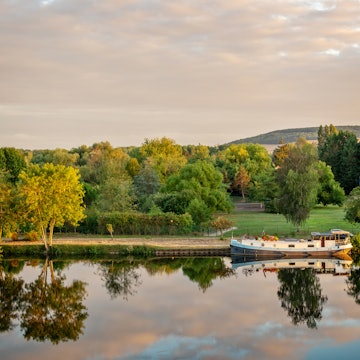
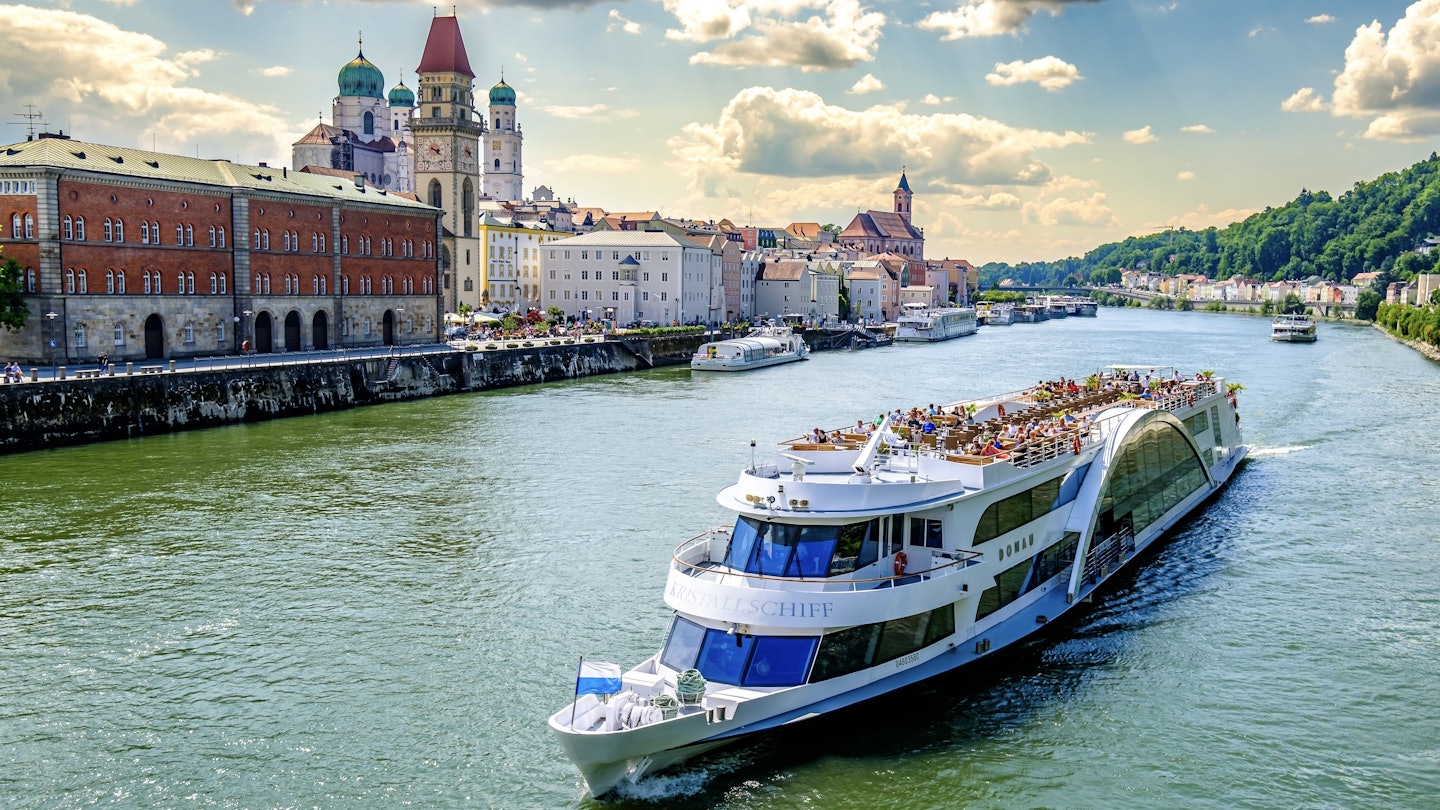
A cruise ship passes by Passau, Bavaria, on the Danube River. FooTToo/Shutterstock
Cruising down a tranquil river, surrounded by scenic riverfront views – with no cars – is an ideal way to see Europe. You can enjoy a glass of wine while watching picture-perfect scenery breeze past – taking in castles, medieval villages and fields of flowers.
By necessity, European riverboats are small, many with fewer than 200 passengers – which ensures a social and intimate experience. With frequent stops, you’ll find plenty to do and see onshore, too. Many cruise lines also now offer immersive learning experiences such as cooking classes and home visits, or landside activities such as bicycle trips and long hikes.
On a continent threaded with mighty rivers, the hardest part is choosing which one to ply. Which is why we’ve rounded up the 10 best places to go on a European river cruise.
Planning tip: Once you’ve chosen your cruise, check out our definitive cruise-packing guide.
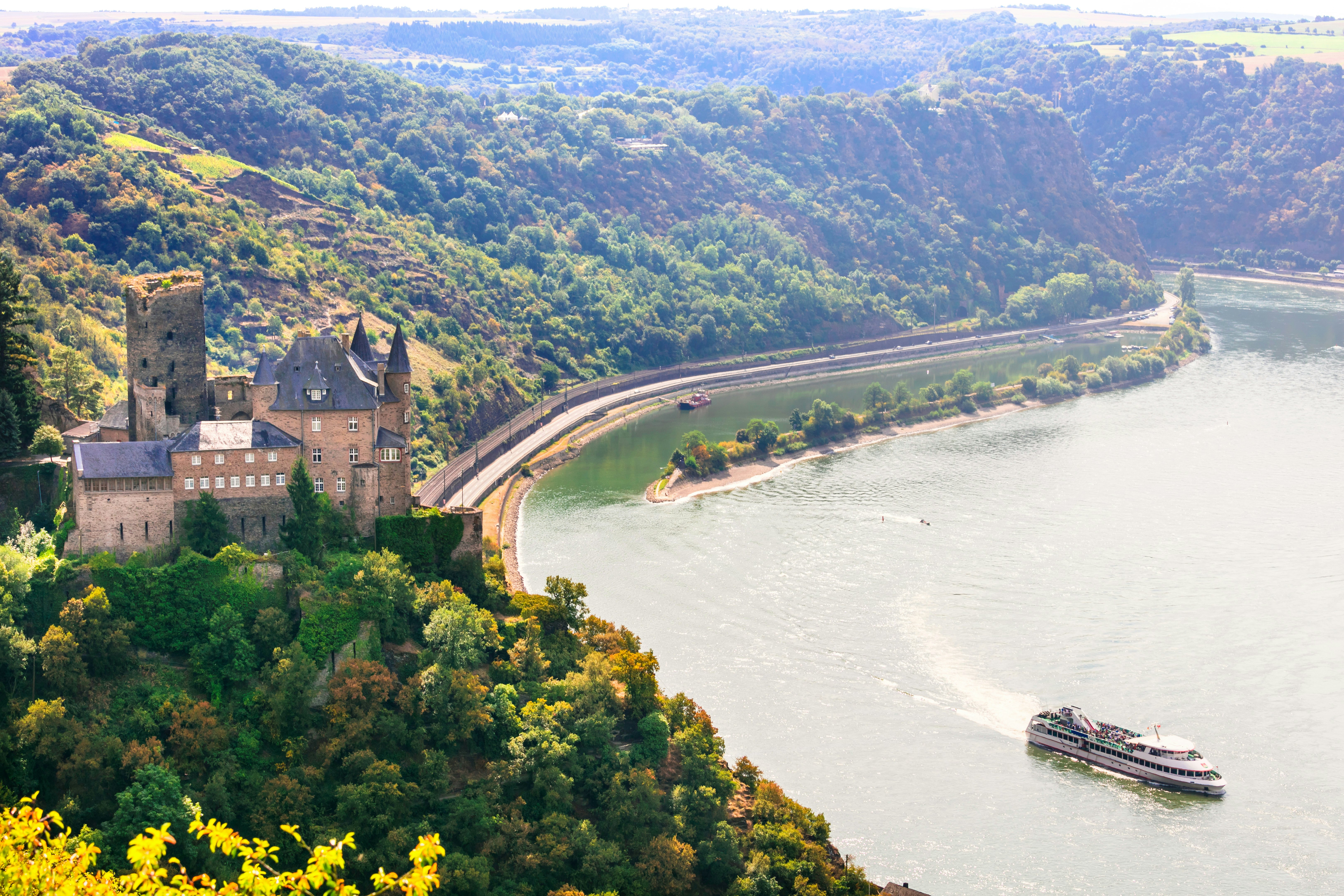
1. Northern Rhine (Germany)
Best for gorgeous river meanders and noble German cities
The northern section of the Rhine features dramatic landscapes and a host of interesting German towns. Historic Cologne (Köln) offers numerous attractions (notably its famous cathedral), while Koblenz, at the confluence of the Rhine and Moselle Rivers, is a park- and flower-filled delight. Heading south, the Rhine meanders between hillside castles and steep fields of wine-producing grapes. Idyllic villages appear around each bend, their half-timbered houses and Gothic steeples seemingly plucked from a fairy tale. Scarcely damaged during WWII, handsome Speyer is crowned by a magnificent Romanesque cathedral.
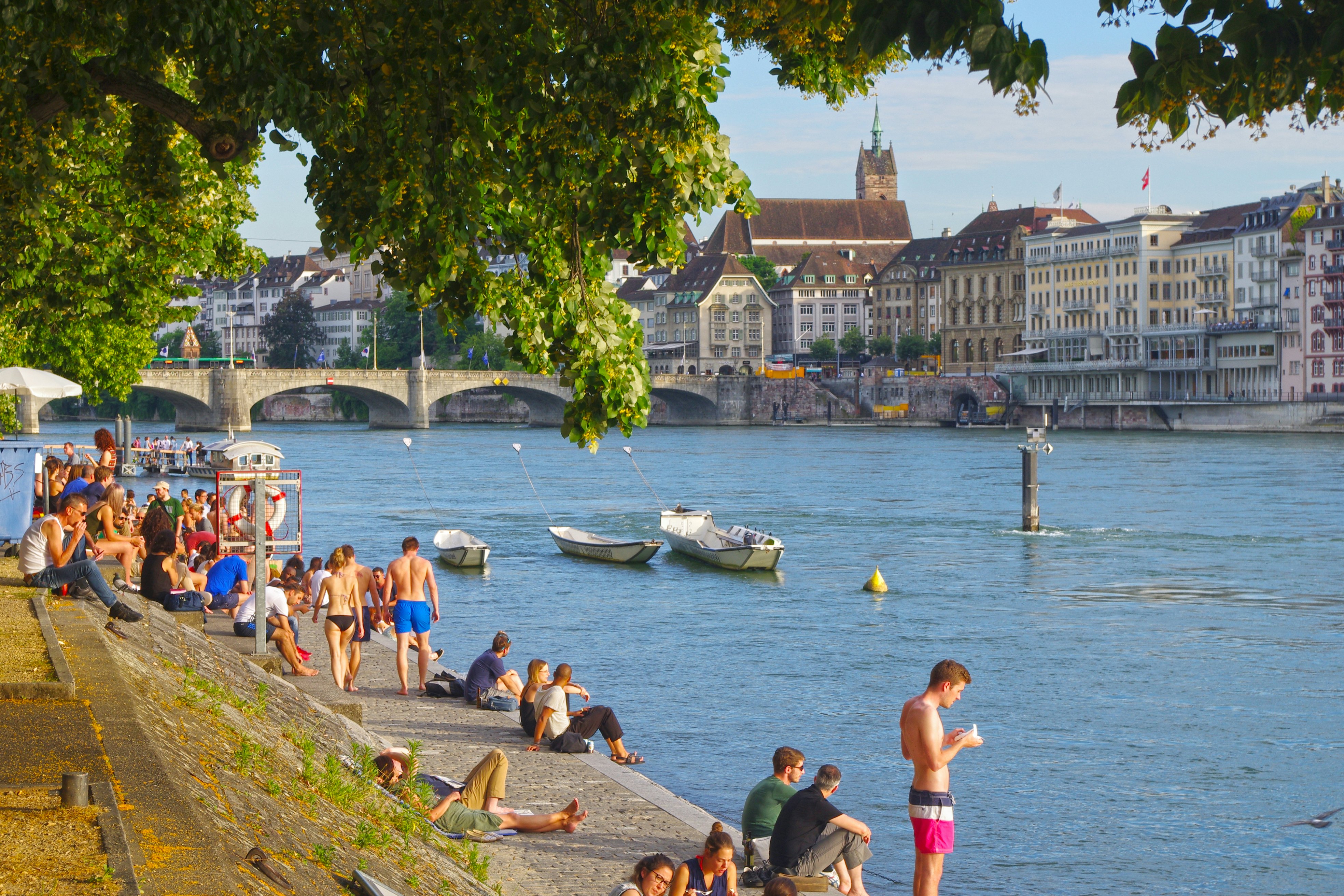
2. Southern Rhine (France, Germany and Switzerland)
Best for exploring intriguing border towns
The southern Rhine forms the border between Germany and France before becoming Switzerland’s northern frontier. With its Franco-German identity, its medieval riches and progressive pan-European institutions, Strasbourg is the perfect overture to all that is uniquely wonderful about Alsace. Further south, the Black Forest meets Alsace at the German town of Breisach. Unsurprisingly, given its geographical and cultural proximity to France, the locals here have a passion for a good bottle of wine. Basel, at the juncture of the French, German and Swiss borders, is perhaps where Switzerland’s multicultural roots are most evident.
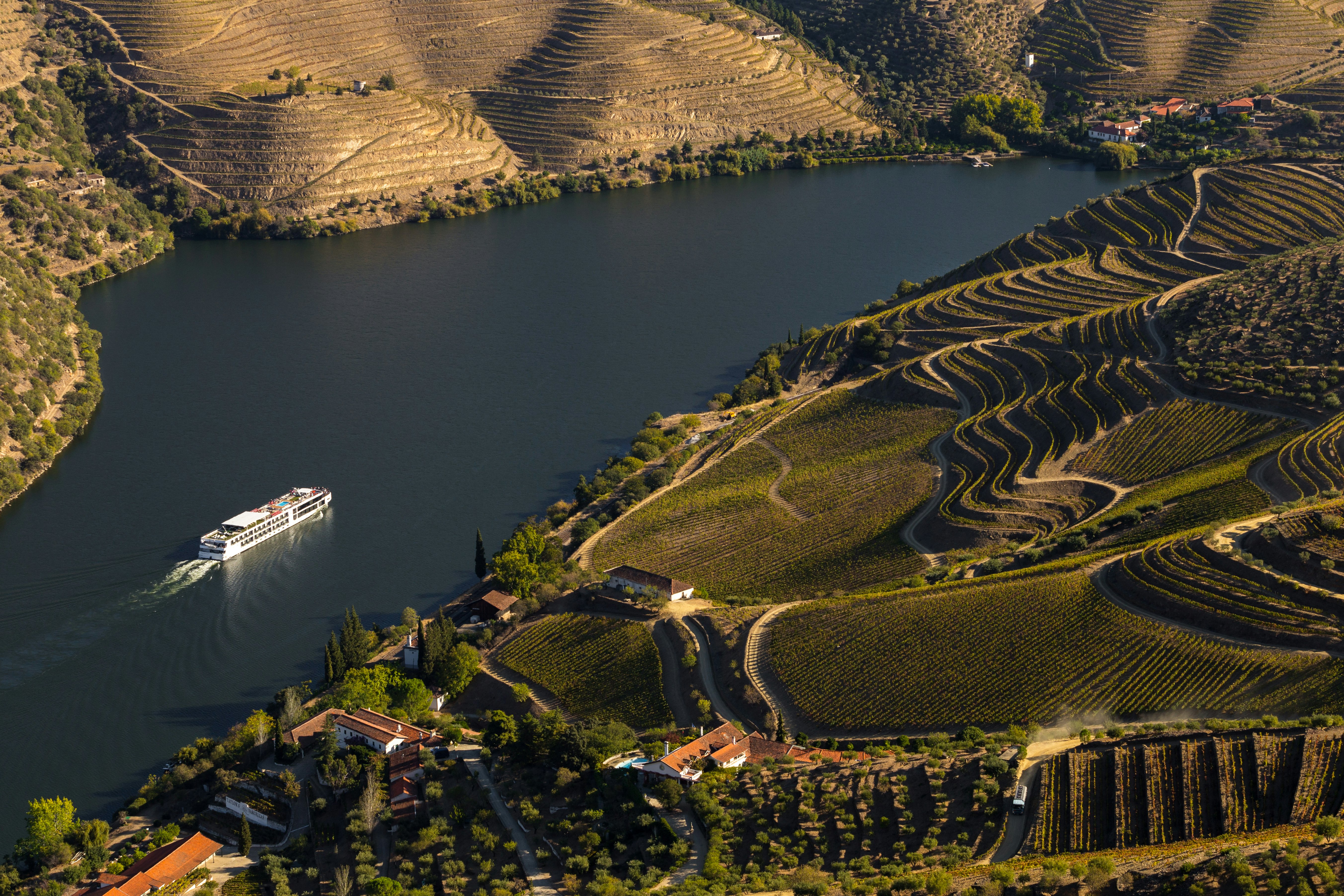
3. Douro (Portugal)
Best for spectacular terraced vineyards and port wine
The Douro region, where the grapes that make port wine grow, is one of the most glorious spots on earth. The Douro Valley showcases steep terraced vineyards carved into mountains, granite bluffs, whitewashed quintas (estates) and 18th-century wine cellars that draw visitors from around the world. Humble-yet-opulent Porto entices with its maze-like medieval center, divine food and wine, and charismatic locals. As with a fine port, the city’s charms are best savored slowly.
4. Western Danube (Austria and Germany)
Best for romantic landscapes in the heart of Europe
Baroque streetscapes and imperial palaces set the stage for Vienna’s artistic and musical masterpieces, coffeehouse culture, and vibrant epicurean and design scenes. Moving into Germany, the Danube gently winds its way to the Italianate city of Passau. Top billing in eastern Bavaria goes to Regensburg, a former capital and one of Germany’s prettiest and liveliest cities. Bavaria’s second-largest city, Nuremberg (Nürnberg), is an energetic place with a fascinating history: it served as the undeclared capital of the Holy Roman Empire, and later as the site of the the trials that adjudicated Nazi war crimes.
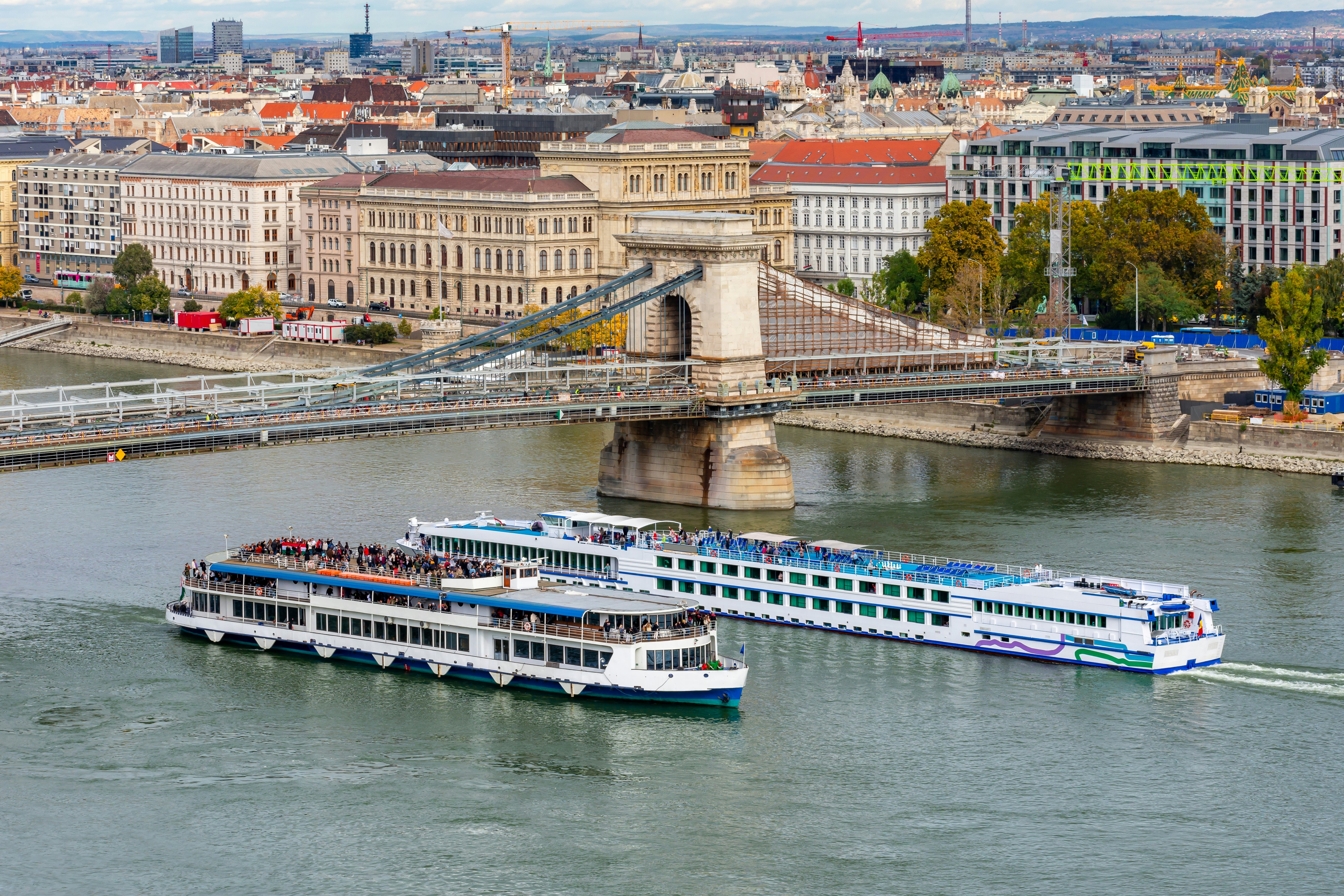
5. Eastern Danube (Hungary and Serbia)
Best for experiencing a cross-section of Europe’s less-touristed east
The two great cities of this stretch of the Danube are the respective capitals of Hungary and Serbia. Budapest has something for everyone – from dramatic history and flamboyant architecture to healing thermal waters. Outspoken, adventurous and audacious, Belgrade (“White City”) has a gritty exuberance and eclectic architecture that make it one of Europe’s most happening places. While the city buzzes with energy, its past unfolds before your eyes: socialist blocks are squeezed between art nouveau masterpieces, while remnants of the Habsburg legacy contrast with Ottoman relics.
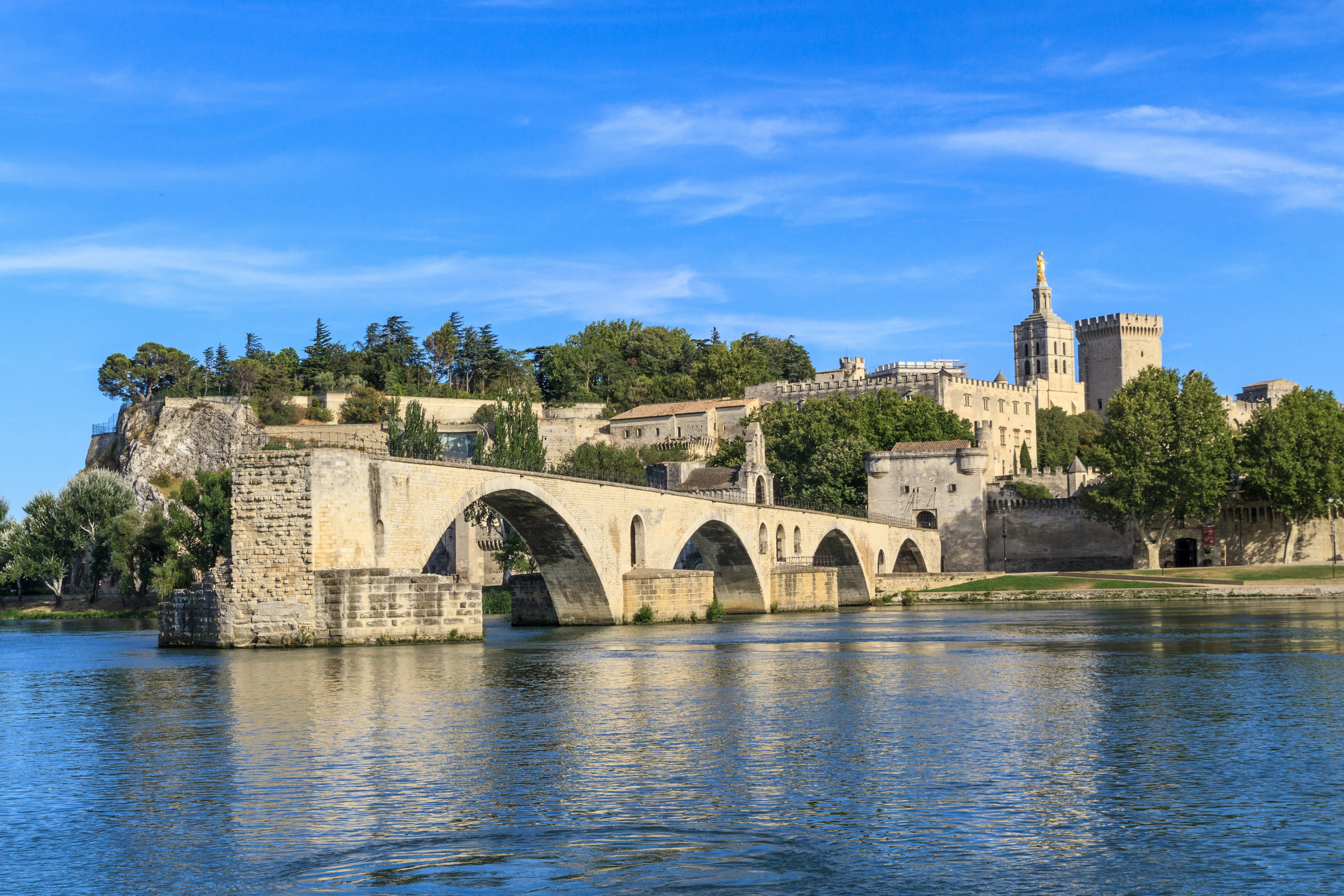
6. Rhône (France)
Best for gourmet experiences and that South of France “je ne sais quoi”
Commanding a strategic spot at the confluence of the Rhône and Saône Rivers, grand old Lyon is France’s gastronomic capital. Downstream, the Rhône forges past Vienne’s Roman ruins and the centuries-old Côtes du Rhône vineyards, opening to sunny vistas of fruit orchards, lavender fields and the distant Alps as it flows south. In the 14th century, the Provençal town of Avignon was the center of the Roman Catholic world. Its impressive legacy of ecclesiastical architecture most notably includes the soaring, World Heritage–listed Palais des Papes.
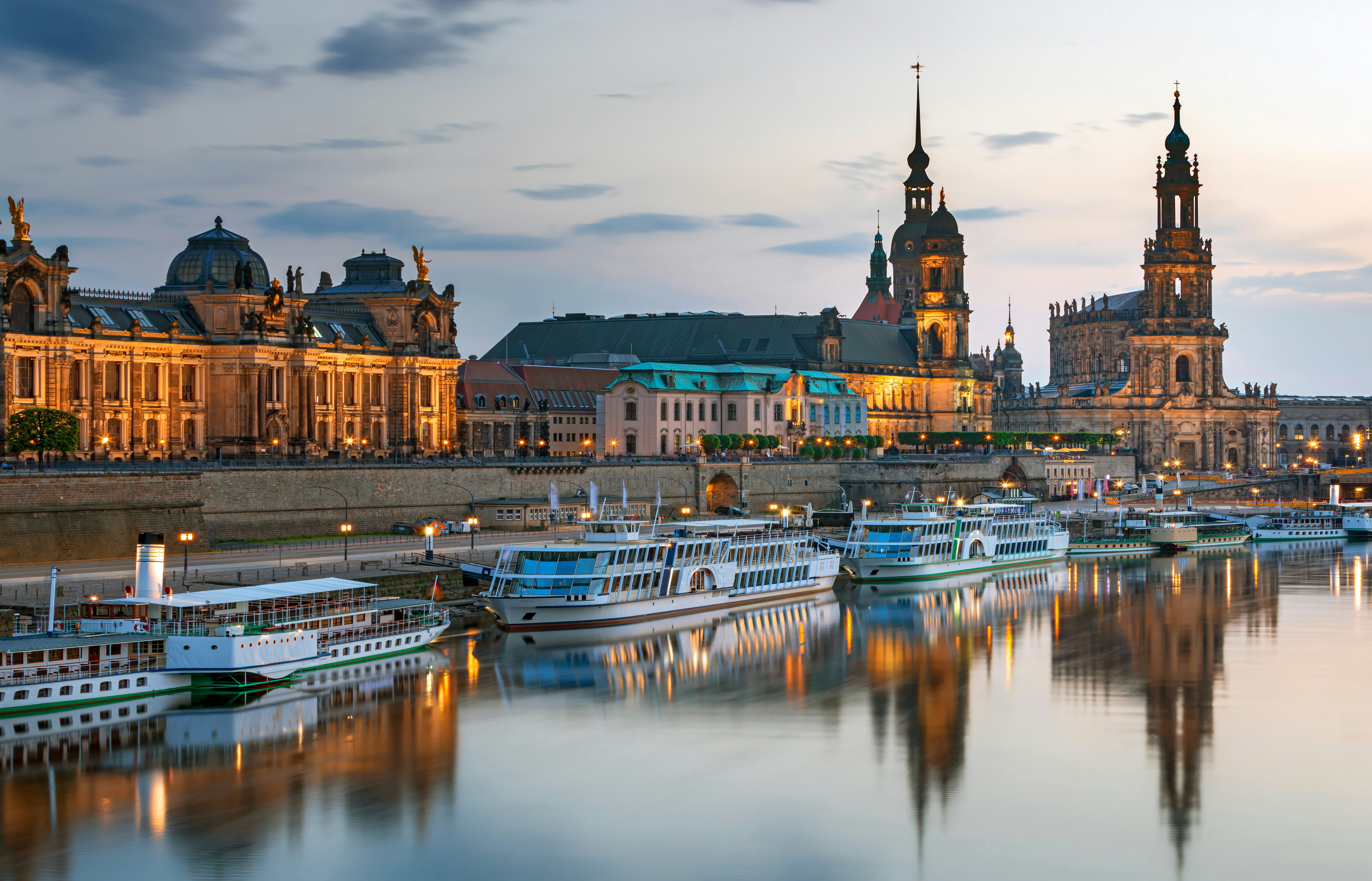
7. Elbe (Czechia and Germany)
Best for a picturesque yet little-cruised stretch of Central Europe
Covering Czechia and a thick slice of eastern Germany, a cruise on the Elbe River is an under-the-radar option. Prague (not on the Elbe but usually included on river cruises) contends with cities like Budapest and Paris in terms of beauty, and its maze of cobbled lanes and hidden courtyards is perfect for the aimless wanderer. The classic view of Dresden from the Elbe’s northern bank takes in spires, towers and domes belonging to palaces, churches and stately buildings – indeed, it’s hard to believe that the city was all but wiped off the map by Allied bombings in 1945 before a painstaking, decades-long reconstruction. The city of Wittenberg is where you can learn all about Martin Luther, the monk who triggered the Reformation in 1517.
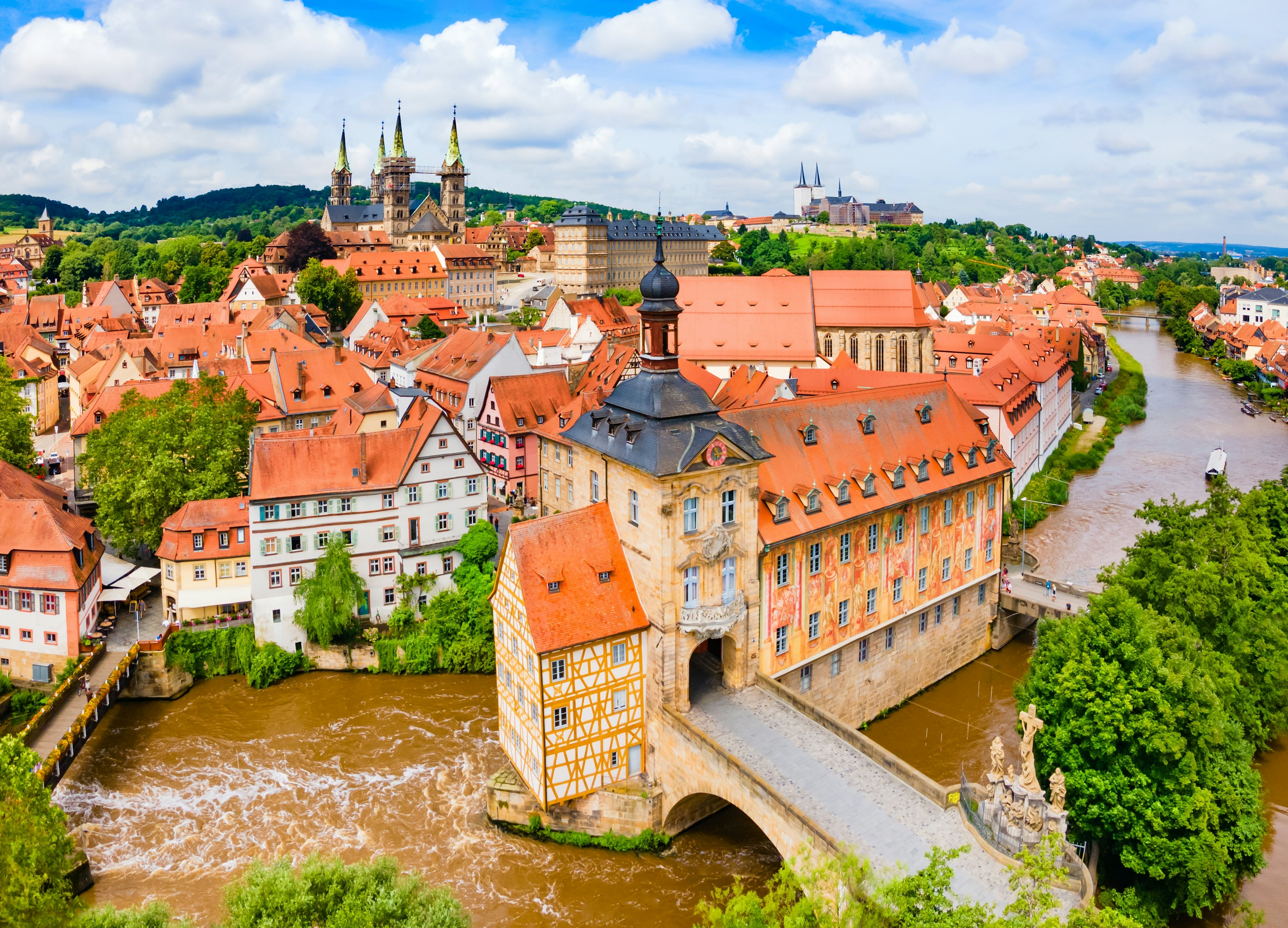
8. Main (Germany)
Best for taking in the heart of Germany
Rising in Franconia and joining the Rhine near Mainz, the Main (pronounced “mine”) is the longest river solely within Germany’s borders. From Bamberg to its confluence, the river flows some 400km (249 miles) through locks and picturesque scenery dotted with historic towns. Frankfurt’s skyscrapers are quite a contrast to the picturesque villages that follow – though this finance capital, too, has a rather traditional and charming old town. Scenic Würzburg is renowned for its art, architecture and delicate wines. A disarmingly beautiful architectural masterpiece, Bamberg’s entire Altstadt is a UNESCO World Heritage site.
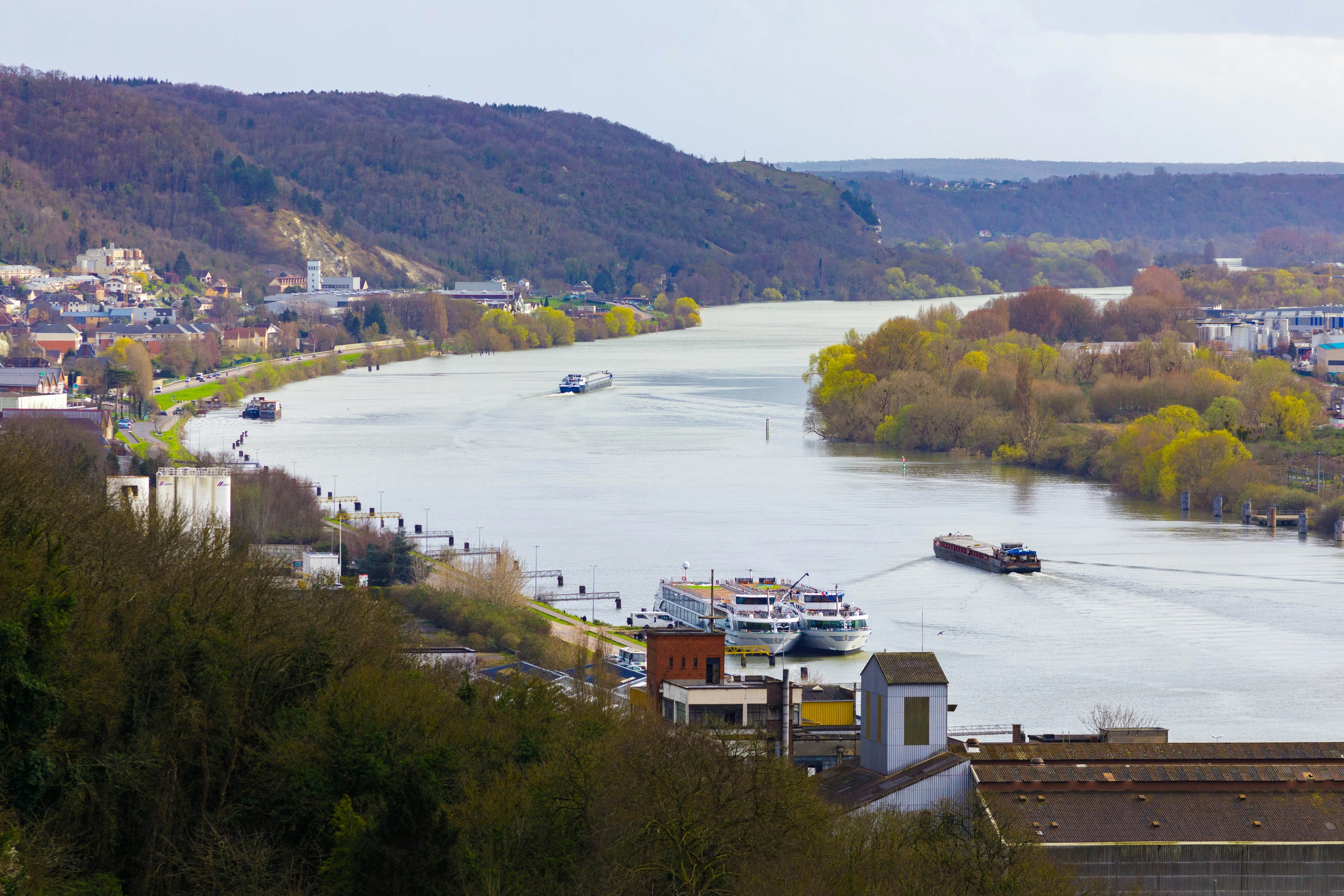
9. Seine (France)
Best for seeing Paris and northern France
Paris has a timeless familiarity, with instantly recognizable architectural icons, memorable cuisine and chic boutiques. You’ll have your pick of sumptuous restaurants (dining out being a quintessential part of the Parisian experience), while the city contains one of the highest concentrations of artistic masterpieces in the world, with priceless treasures displayed in palatial museums. Further down the Seine, Rouen is one of Normandy’s most engaging and historically rich destinations, with its soaring Gothic cathedral, beautifully restored medieval quarter, excellent museums and vibrant cultural life. At the mouth of the Seine, Le Havre is a love letter to modernism, evoking France’s postwar energy and optimism.
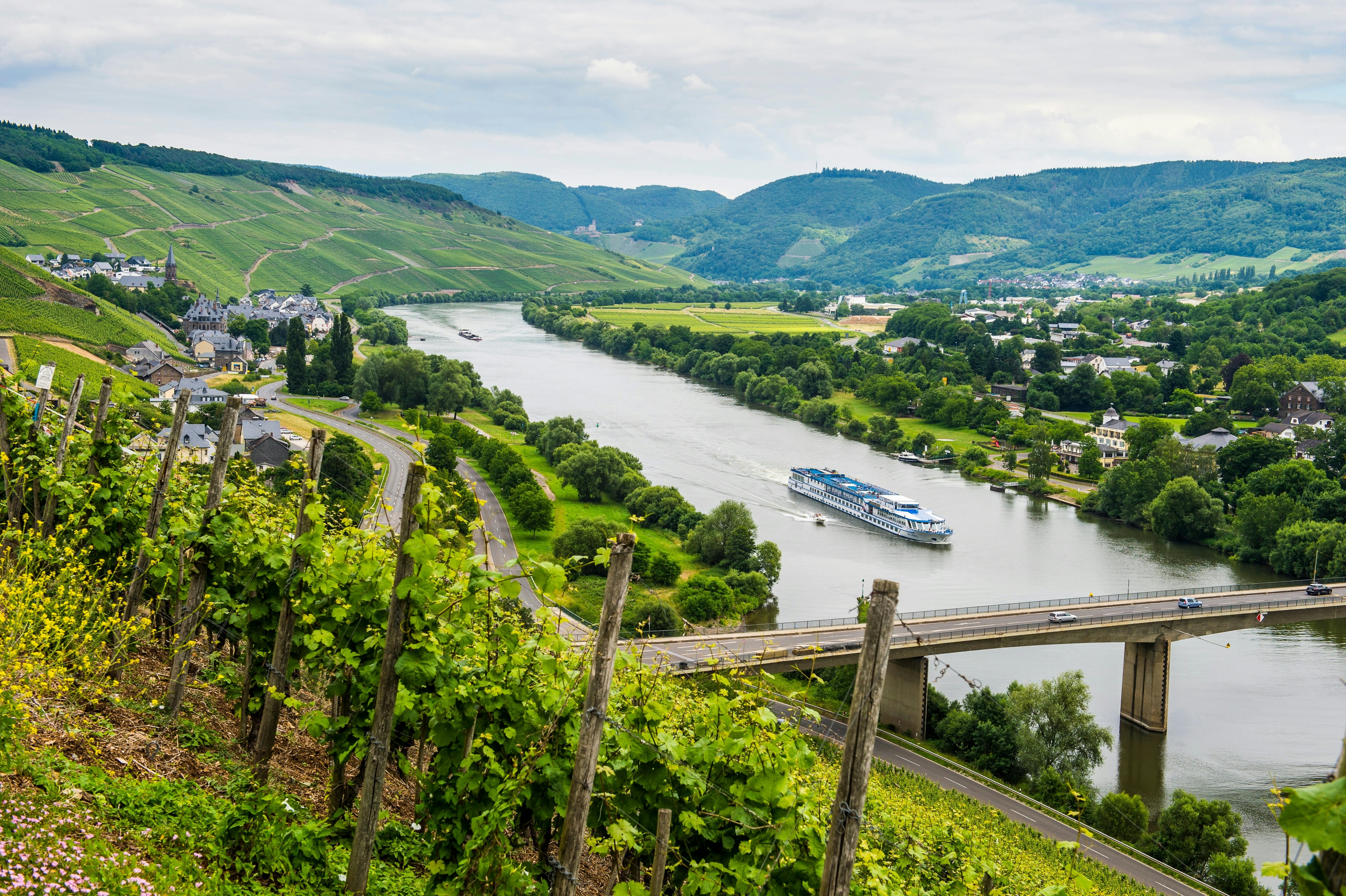
10. Moselle (Germany)
Best for savoring German wines
After traversing France and Luxembourg, the Moselle heads through Germany to meet its destiny with the Rhine at Koblenz. This very pretty stretch of river is flanked by vineyards, and makes for great leisurely cruising and exploration. With an astounding nine UNESCO World Heritage sites, gorgeous Trier is home to Germany’s finest ensemble of Roman monuments, and is enlivened by a characterful medieval center and large student population. Bernkastel-Kues are lovely twin settlements in the heart of wine country, while Cochem’s castle and pretty buildings make it a visual highlight of the Moselle Valley.
How do I choose a route for a European river cruise?
The two major rivers for European cruises are the Rhine and the Danube, which together once formed the northern boundary of the Roman Empire. Rhine cruises often run from Amsterdam to Basel, following the course of the river through Germany. Danube cruises start in southern Germany, wend their way through Linz and Vienna, Austria; Bratislava, Slovakia; Budapest, Hungary; and Belgrade, Serbia; then follow the Bulgaria–Romania border to reach the Black Sea.
While many first-time European river cruisers stick to these two rivers, many other waterways appeal. In Western Europe, you can cruise through the French countryside on the Rhône and Seine, or check out the vineyards of Portugal on the Douro.
Even on the same river, you can find distinct routes. One company might zip up the Rhine, allowing you to see the highlights in a few days; another might take longer, exploring smaller places along the way and offering more time for onshore experiences. You’ll need to decide whether you’d like to get a look at more destinations, or focus on getting a deeper feel for a few key places.
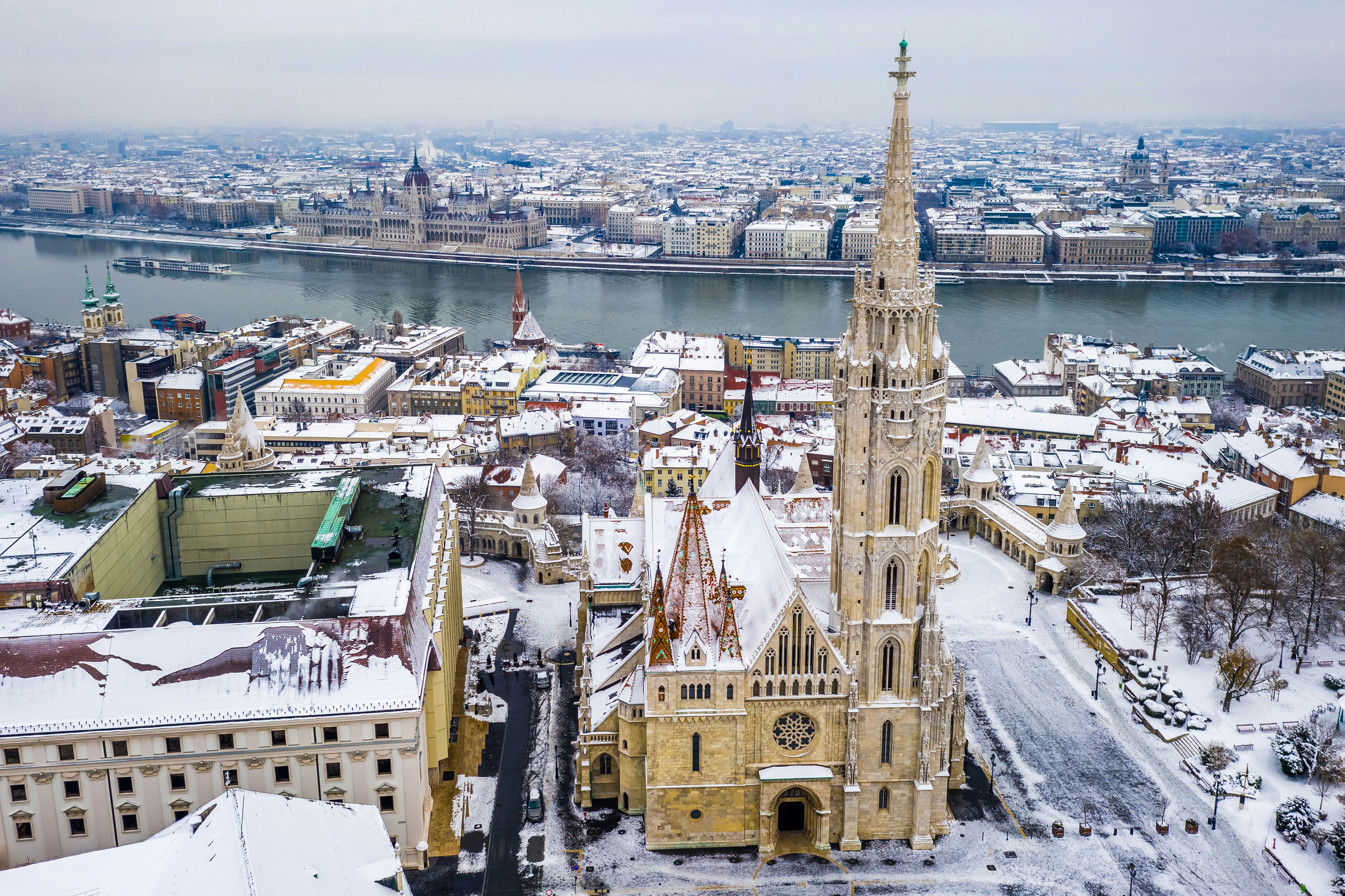
When is the best time to go on a European river cruise?
Cruises on European rivers tend to begin in the spring, around March, and go through to October. Some cruises that operate in areas where Christmas markets are a feature, run through December – though inclement weather or river flooding could put a damper on plans. Shorter daylight hours mean you’ll see less scenery, but the charm of the festive season has its own appeal.
Choosing your season is very much a matter of personal preference, and there are pros and cons for each season. Summer cruises offer the most spectacular scenery, the longest daylight hours and the best weather – but the towns you visit will be far busier, with many ships calling at once. Indeed, in some smaller places, you may have to scramble across the decks of other boats to reach the shore.
Spring and autumn mean less time around the pool on the top deck, but quieter times ashore. Expect rains in spring, but also blooming flowers. Autumn is a great time to cruise the Douro, as you can watch grapes being picked and enjoy clement temperatures.














